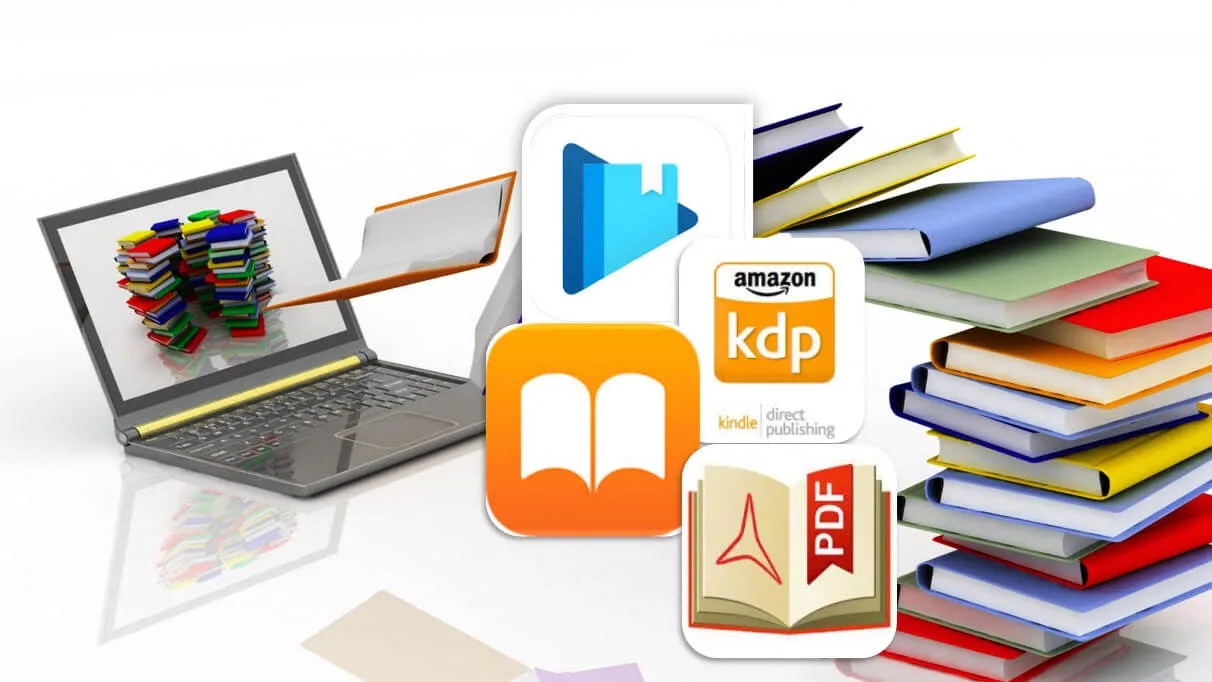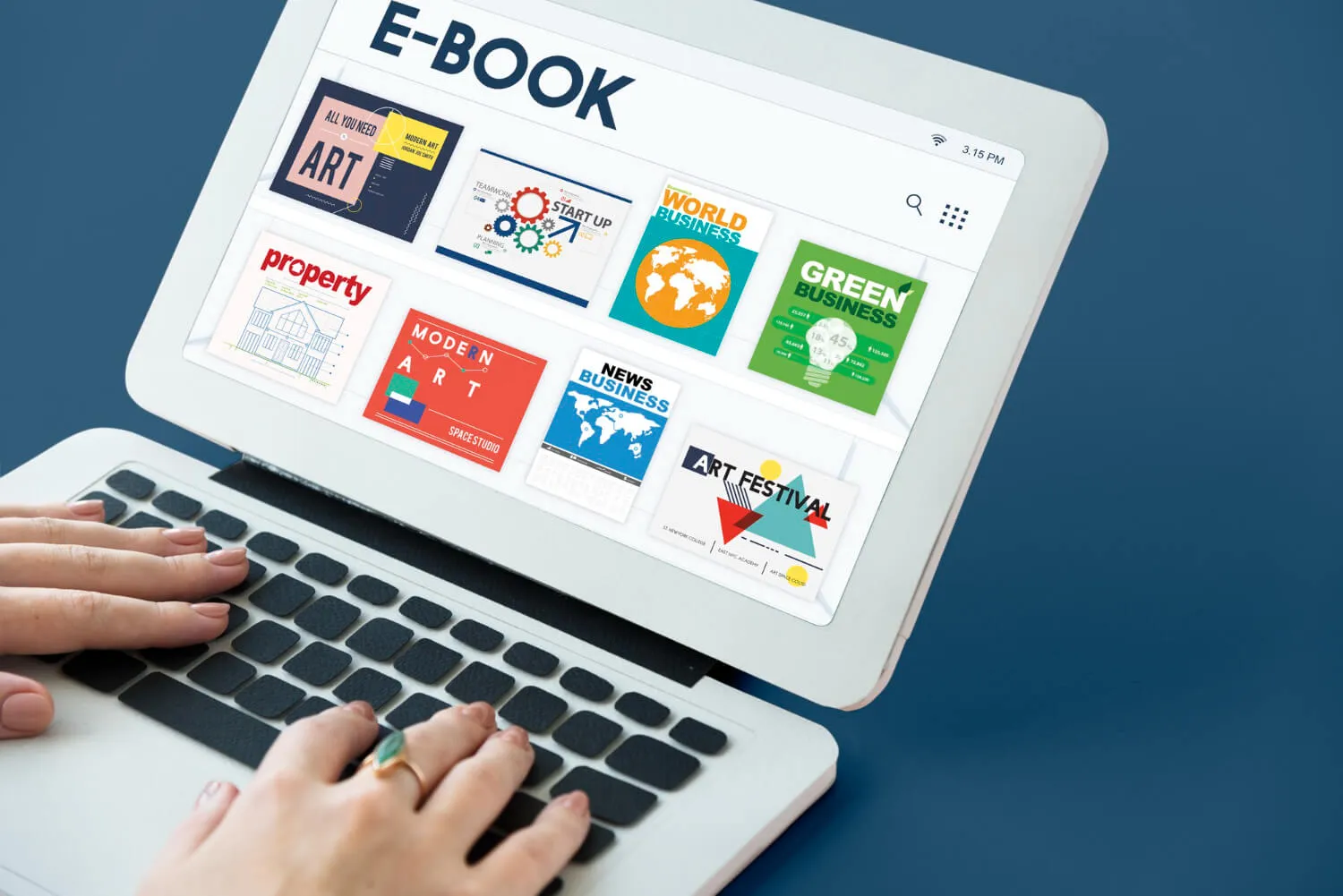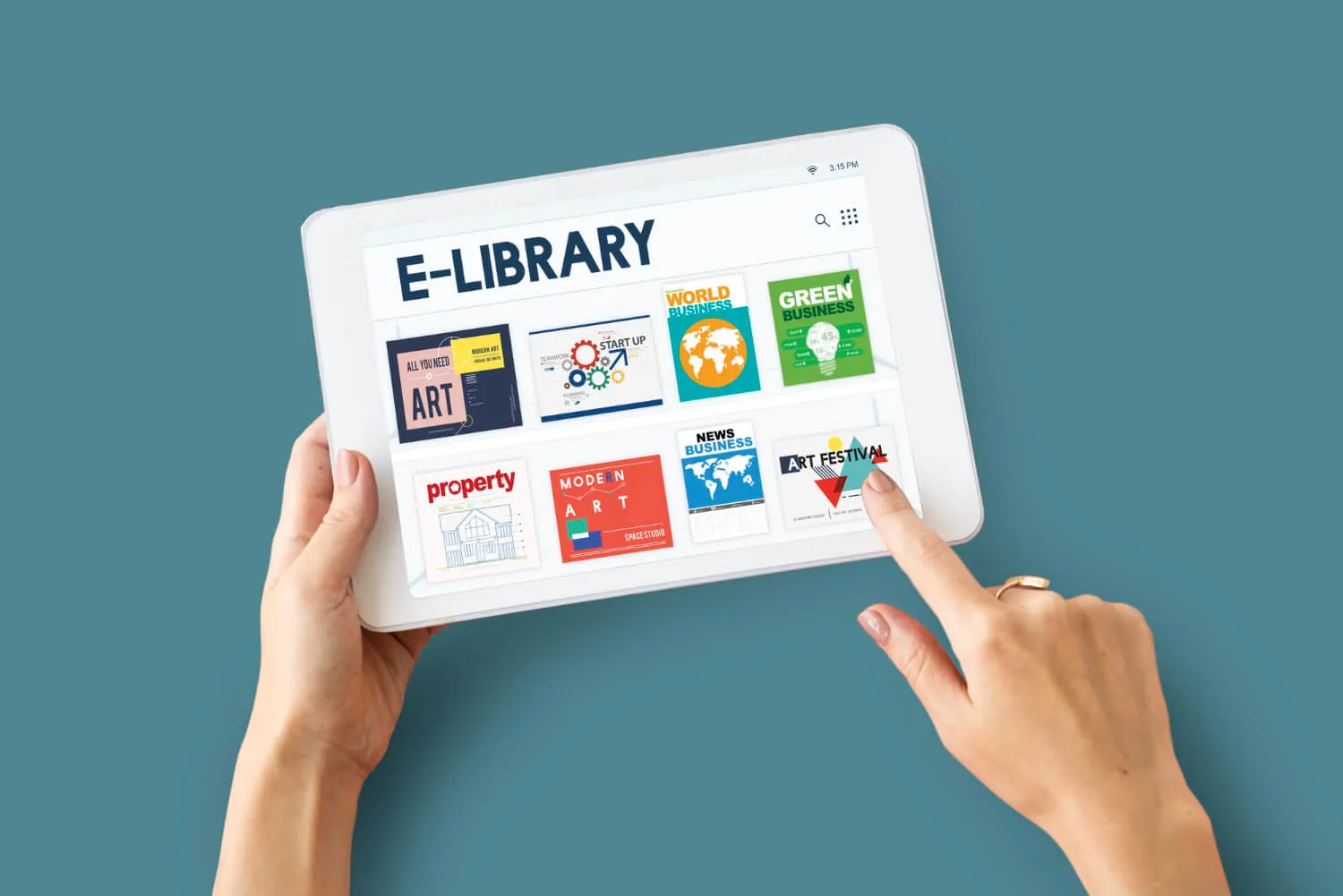
Table of Contents:
- Your Complete Guide to Self-Publishing:
From Idea to Bestseller
- Introduction
- What Self-Publishing Really Means
- Choose Your Genre, Any Genre
- Time to Start Writing
- Editing
- Formatting
- Cover Design
- Choosing the Right Self-Publishing Platform
- Marketing
- Book Launch and Distribution
- Chart Your Publishing Path - Let Us Help Transform Your Manuscript into a Standout Success with a Free Consultation!
Your Complete Guide to Self-Publishing: From Idea to Bestseller
Introduction

So, you've got a book in the works. Or maybe there's a brilliant idea bouncing around in your mind, but you haven't quite started writing yet. Perhaps the daunting thought of navigating the traditional publishing maze is holding you back, because, let's face it, it can be a real hassle.
First, you need to land an agent, and then that agent has to connect you with publishers. After months, or sometimes even years, of meetings and rejections, you might finally secure a publishing deal. But what if there was an easier option? A more straightforward path. What if you could publish it yourself?
What Self-Publishing Really Means

But hold on, what exactly is self-publishing? The days of publishers holding all the power are long gone. Now, the control is in the hands of the author, and you can use this to your full advantage. In simple terms, self-publishing means you're cutting out the middlemen and taking your work directly to the readers, all on your own.
If you think it's a wild idea, consider this: about 1.7 million books are self-published each year, with many achieving remarkable success. Christopher Paolini turned his love for fantasy into the best-selling Inheritance Cycle and even scored a major movie deal. Rupi Kaur, the renowned poet behind Milk and Honey, which topped the New York Times Bestseller list for 77 weeks, also began her journey through self-publishing.
But self-publishing doesn't mean just printing your book and handing it out on street corners. There's a process to follow, and in this guide, we'll take you through each step until you can proudly call yourself a published author.
Choose Your Genre, Any Genre
Seems like a no-brainer, right? But you'd be amazed at how often people rush ahead without a clear plan. As simple as it may sound, writing your first book is no walk in the park. It demands time and dedication, so you'll want to kick things off with a solid concept, a seed that will grow into the foundation of your entire book.
Are you leaning toward genre fiction? Maybe you're itching to create the next big sci-fi sensation? Or perhaps you have grander ambitions that steer you toward literary fiction? Maybe you're a true romantic and dream of crafting a timeless love story.
And who says you have to stick to fiction? Non-fiction is a fantastic choice for first-time authors, especially if you're more into research than storytelling. In fact, it's one of the most profitable genres out there.
Take Brad Aronson, for example. Moved by his wife's battle with leukemia, he penned Humankind, a book celebrating the power of kindness in a world that often seems harsh. Brad's book became a bestseller, and he's not the only one who found success this way.
William Cowan turned his thirty years in the corporate world into Building a Winning Career, Andrew Griffiths captured his 35 years of entrepreneurial wisdom in Someone Has to Be the Most Expensive, and James Altucher's Choose Yourself! spread his self-investment philosophy to wide acclaim.
These authors hit it big and topped bestseller lists with non-fiction. You can do it too!
Time to Start Writing
Being a writer isn't easy, not by a long shot. It's almost cliché how often writers hit a wall, and the closer you get to finishing your book, the tougher it can be to push through to the end. To help you stay on track, here are some key Do's and Don'ts to keep in mind.
Do's:
DO stick to a routine: Writing can feel like a grind sometimes, but it becomes much more manageable when you do it consistently. There's no one-size-fits-all approach here—some people thrive in the morning, while others find their groove as the sun sets. Find what works for you, but whatever you choose, make sure that time is dedicated solely to writing. Doing anything else can break your flow, and once that's gone, it's tough to get it back.
DO set a deadline: This is crucial, especially if you're self-publishing! Having a deadline looming can push you to work faster, even if you're only holding yourself accountable. A solid approach is to aim for a chapter a week or set a goal of 500 to 1,000 words per day—whatever feels doable for you. This gives you a target to aim for, and reaching it will give you a boost of satisfaction and motivation.
DO keep a notebook handy: Inspiration can strike at any moment, so it's wise to be prepared. A little notebook can be a game-changer for your writing speed. It's a space where you can jot down ideas and interesting things you encounter throughout your day, so when it's time to write, you can dive right in without searching for inspiration.
Don'ts:
DON'T edit as you go: It's easy to get caught up in the details, but that's a surefire way to slow yourself down. Obsessing over every word can disrupt your focus and give your inner critic too much control. Don't let the pursuit of perfection get in the way of progress. Let the words flow and save the fine-tuning for later.
DON'T overcommit: No one's expecting you to churn out hundreds of books like Isaac Asimov (although that would be impressive!). The goal is to finish what you start, and if writing something shorter or simpler helps, then go for it! Of course, that doesn't mean you should limit yourself, but don't take on more than you can handle. Finishing a draft will motivate you to tackle bigger projects, whereas abandoning one can drain your energy and enthusiasm.
DON'T lose focus: Easier said than done, right? But staying focused is essential, especially in our distraction-filled world. Here are a few time management strategies that might help:
- The Pomodoro Technique: Break your writing time into 25-minute chunks, followed by a 5-minute break, and take a longer 15-minute break after every four intervals. You can use an app to help with this and adjust the intervals to suit your preferences.
- Time Blocking: Set aside specific blocks of time for writing, research, or any other tasks related to your project. When you're in your writing zone, stay focused—no checking your phone, no answering emails, just writing, researching, or editing.
- Create a Writing Space: Whether it's a whole room or a cozy nook, having a dedicated space for your writing can make a big difference. No phones, no distractions—just you and your work. A bulletin board for ideas can be a helpful addition, too.
Editing
Once you've wrapped up your first draft and celebrated that big milestone, it's time to shape it into its final form. Don't stress if you spot a bunch of errors—that's exactly what editing is for!
There are four key stages of editing that you'll need to work through. Let's break them down:
- Developmental Editing: This is the first step in the editing process, focusing on the heart of your story. Does it all make sense? Are there any plot holes or loose ends you didn't mean to leave hanging? Pay close attention to how your characters develop, and ensure the themes stay consistent throughout your draft.
- Line Editing: With the big picture sorted, it's time to dive into the details. Go through your manuscript line by line, checking for any issues with flow or coherence. Don't hesitate to tweak sentences or adjust transitions—it's all part of refining your book to make it the best it can be.
- Copy Editing: By now, your story should be solid and flowing smoothly. But what about those pesky punctuation errors? Grammatical slips? Formatting glitches? During copy editing, you'll focus on these kinds of issues and also double-check for factual accuracy, especially if you're working on non-fiction.
- Proofreading: Finally, we reach the last stage of editing! This is where you give your draft one final, thorough read to catch anything you might have missed. Once you're done, you're all set!
Pro Tip: Editing can be just as draining as writing, so it might be a good idea to bring in a fresh set of eyes. While there's nothing wrong with editing your own work, having someone else do it can reduce the chances of mistakes slipping through.
Formatting

It all begins with the page layout, which might not sound super exciting, but that's the idea—it shouldn't be noticeable. If someone's paying attention to the layout, it's likely disrupting readability! To make sure your draft looks polished and professional, here are some key typesetting tips to follow:
- Font: The font you choose depends a lot on your genre. Non-fiction usually calls for something straightforward and serious, while fiction gives you more room to get creative. Fonts like Garamond or Centaur work well. For body text, stick with a font size between 11 to 12 points, with a minimum of 7 points.
- Chapter Headers: You might have to keep it simple with body text fonts, but feel free to get a little more creative with chapter headings. Adding some flair at the start of each chapter can be a nice touch, but don't overthink it. If you're stuck, just bold your regular font for the headings and move on.
- Paragraph Format: Indent each paragraph about 0.2 inches from the left, except for the first one, which usually isn't indented. Justified text gives your book a more polished look, especially for ebooks, as it helps with the flow. If justified text causes awkward line breaks, don't hesitate to hyphenate.
- Page and Line Breaks: Watch out for widows and orphans, but not the kind you're thinking of! In formatting, a widow is the last line of a paragraph that ends up on the next page, and an orphan is the first line of a paragraph that lands on the previous page. Get rid of them to enhance readability.
- Spacing: Your text should fit neatly within a "book block," a well-defined area in the center of the page. For printed books, lines on facing pages should align perfectly. When formatting an ebook, avoid adding extra spacing before or after lines and paragraphs—keep it set to 0 points, with single line spacing.
- Margins: There are four margins to keep in mind: top, outside, bottom, and gutter. The top and bottom are self-explanatory; the outside margin is the outer edge of the page, and the gutter margin is the space between the book block and the binding. If your book includes images or designs, consider the bleed—this is the part of the image that extends beyond the page's edge to ensure a clean trim. Books with bleeds need outside margins of at least 0.375 inches, while those without can have 0.25 inches. Gutter margins vary depending on the book's length, ranging from 0.375 inches for shorter books to 0.875 inches for longer ones.
- Trim Size: The standard size for printed books is 6x9 inches. You can go larger if you like, but keep in mind that this might increase printing costs.
Pro Tip: Tools like Scrivener or Vellum can be a lifesaver when it comes to formatting. Work smarter, not harder!
Ready to start your self-publishing journey? HOBs provides the technical support you need to guide your manuscript from concept to publication, ensuring a smooth process and a book readily available in the market for your readers
Learn MoreCover Design
It's no secret that people do judge a book by its cover, and most readers are guilty of it. Many authors have seen their sales skyrocket simply by updating their cover design. Check out these examples:
- Martin Lake: The author of the "Lost King" series saw his sales jump from just a few dozen to hundreds after giving his cover a makeover.
- D.F. Hart: His mystery thriller series had a best sales month of only 167 units. But after a cover redesign that clearly communicated the genre, he managed to sell over 7,500 units.
- Simone Leigh: This romance author discovered the power of small tweaks. Her "Bought By the Billionaire Series" saw a leap from 467 units sold over two months to an incredible 4,467—over a 1000% increase!
Don't wait until the last minute to think about your book's cover. It's a crucial part of the process, so it's better to tackle it early on.
So, how should you approach designing your book cover? It's taken you months, maybe even years, to reach this point, so you definitely want to get this right. Your cover should accurately reflect the content of your book. If you're writing non-fiction, avoid the temptation to plaster your face on the cover. There's a fine line between self-promotion and vanity! Take a page from Robin Sharma's book. The author of "The 5 AM Club" chose a cover that perfectly captured the essence of his book without giving too much away.
As you write, try jotting down ideas for your cover. Did any visual elements stand out? Is there something that captures the core of your book? Fiction writers might consider featuring a couple of characters on the cover, like in Legends and Lattes by Travis Baldree, or opt for something more symbolic, like The Twisted Tree by Rachel Burge.
While you could design the cover yourself, especially if you want full control, there comes a time when it's better to hand the reins to someone with more experience. There's a vast pool of talented designers out there. Our advice? Invest a few hundred dollars to hire a professional so you can concentrate on the final steps!
Choosing the Right Self-Publishing Platform

These days, finding a self-publishing platform is easy, but picking the right one? That takes a bit more thought. Here are three important factors to consider:
- Royalties and Costs: How much of the profits will you actually see? Are printing costs included, or are they an extra charge? These are key questions to ask. Take the time to compare options until you find a platform that suits your needs. Keep in mind that lower royalties aren't always a deal breaker—they might come with benefits like more control over where and how your book is sold, which brings us to the next point.
- Distribution: Amazon's Kindle Direct Publishing (KDP) offers higher royalty rates, but it ties you to their platform. On the flip side, IngramSpark gives you a smaller cut per book, but you get the freedom to choose which retailers carry your book.
- Author Services: This includes everything from editing and proofreading to cover design—basically, all the services you might need beyond writing. Make sure the platform you choose offers an author profile, complete with your bio, photo, and social media links. Also, look for platforms that provide marketing support, customer service, tutorials, and a dashboard to manage your books and track sales.
Marketing
Now that you're nearing the finish line, it's time to get the word out about your book. Here are a few strategies to build some buzz:
- Boost Your Social Media Presence: If you're not already on social media, now's the time to get started. Engage with journalists and critics on Twitter, join writing communities on Reddit, and seek endorsements from influencers on Instagram! Your marketing plan should cover everything from tweets to short-form videos, so consider creating a book trailer for YouTube and TikTok.
- Build an Author Website: Having a website adds credibility and gives readers a peek into the person behind the book. Don't forget to include a blog! The more platforms where you can share your writing, the better. Post occasional snippets from your book to entice readers into buying the full version.
- Don't Overlook Email Marketing: Include a call-to-action on your website inviting visitors to join your email list. This ensures they stay updated with your blog posts and snippets and are the first to know about your book launch.
- Get Your Book Reviewed: If people aren't sure what they're getting, they're less likely to make a purchase. There are plenty of ways to get reviews, starting with professional services and other third parties where you pay a fee for an honest critique of your book. But you don't always have to pay for reviews. Amazon Vine can help you get free reviews, and you can encourage readers to share their thoughts as well.
Book Launch and Distribution
You've made it to the final stretch! Your book is written, edited, reviewed, and designed, and you've chosen the perfect publishing platform. Now, you're ready to take that monumental first step into becoming a published author.
As exciting (and nerve-wracking) as this moment is, it's crucial to plan a solid launch and distribution strategy. Here's what you should focus on:
- Maximize Distribution: Make sure your book is available across as many platforms as possible, both online and in physical stores. Consider Barnes and Noble, and IngramSpark to cover all bases. The right self-publishing platform will help you reach a wide range of bookstores. And don't forget to think globally—reaching an international audience can do wonders for your brand.
- Send Out a Newsletter: If you've been building your presence on social media and keeping your author website updated, you should have a loyal following ready for your book's release. Keep them in the loop with an email newsletter, and be sure to include links to where your book can be purchased.
- Ramp Up Your Marketing: Now's the time to go all out. Engage with influencers and journalists, and plan some in-person events like book readings, meet-and-greets, and community gatherings. A book launch party is a fantastic way to celebrate your big day and generate buzz. Don't forget to include book signings and a well-prepared speech to leave a lasting impression.
- Update Your Website: Your homepage should be fully geared up for the book launch. Highlight the cover, feature some early reviews, and add a new page listing upcoming events where you'll be promoting your book.
One final tip: Think long-term. The moment your book is out there, you've already achieved something great! If your launch doesn't take off as expected, don't be discouraged—it just means you need more time to connect with your audience. Stay patient, keep pushing forward, and whatever you do, don't give up.
Chart Your Publishing Path - Let Us Help Transform Your Manuscript into a Standout Success with a Free Consultation!
You're about to kick off your self-publishing adventure, and if you decide to go it alone, more power to you! But it's perfectly normal to feel like this entire process might be a bit overwhelming. Between editing, cover design, and crafting a launch strategy, burnout can sneak up on you.
There's absolutely nothing wrong with wanting to focus solely on writing—in fact, it might even help you finish faster and produce something of even higher quality. That's where we come in.
We'll take care of the details so you can stay laser-focused on what you love most—writing. Let us handle the rest and make sure everything is done right.
Here's what your FREE consultation will cover:
- A discussion of your publishing goals
- An initial review of your manuscript
- A conversation about our various publishing options (we offer distribution through IngramSpark, and Barnes and Noble)
- Insights into marketing and cover design options